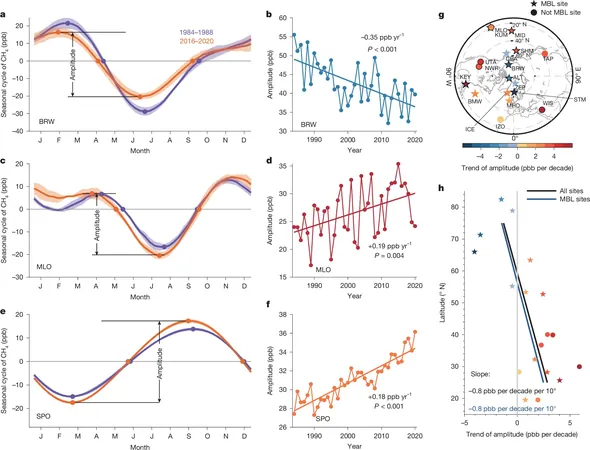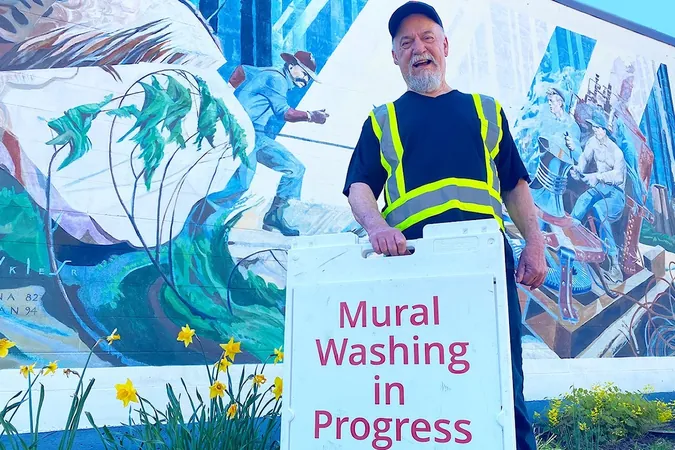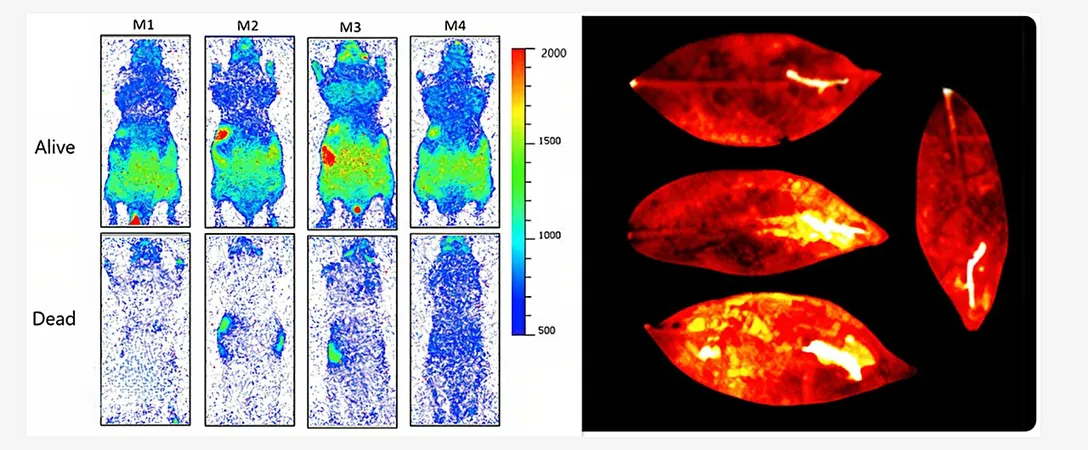
Revolutionizing Language: How AI is Battling Anti-Indigenous Bias
2025-04-29
Author: Benjamin
Meet wâsikan kisewâtisiwin: An AI to Fight Inequality
In a world increasingly driven by technology, one groundbreaking AI application is stepping up to combat anti-Indigenous bias in writing. Dubbed wâsikan kisewâtisiwin, this innovative tool is the brainchild of Shani Gwin, a dedicated First Nations and Métis communications professional. But before diving into its profound implications, the first question people often ask is, "How do you pronounce it?" Gwin happily provides the answer: "Wuh-see-gahn key-su-wat-su-win." And just like that, you’re on your way to understanding more than just sounds.
The Motivation Behind the App
Gwin's journey to create this app was fueled by disheartening experiences during the 2020 pipeline protests in Wet’suwet’en territory, where biased media narratives deepened the rift between Indigenous communities and the public. Feeling the burden of correcting misconceptions while maintaining mental well-being, Gwin envisioned a digital "little helper" similar to Microsoft Word's Clippy—but aimed at nurturing understanding instead of just writing skills.
A Personal Connection to Language
Language is a core passion for Gwin, whose family history is steeped in multilingualism. Her great-grandfather spoke six languages, including nêhiyawêwin (Cree), the mother tongue of her great-grandmother. Gwin's personal journey with learning Cree revealed a hidden world of identity and cultural richness. This passion not only inspired her to create a helpful tool but also led her to rename her PR agency to pipikwan pêhâtâkwan, signifying empowerment and responsibility within Indigenous storytelling.
Ethical AI: A Community-Centered Approach
As Gwin collaborates with the Alberta Machine Intelligence Institute, the focus has shifted toward ensuring the ethical development of AI. Rather than simply accumulating data, the app seeks to receive community support and input, ensuring that Indigenous traditions and protocols are honored. Gwin emphasizes the importance of working closely with elders from various First Nations and Métis communities to build a respectful and representative dataset.
A New Wave of Indigenous-Led Tech Initiatives
The launch of wâsikan kisewâtisiwin is part of a larger movement of Indigenous-led technological innovations. Like-minded ventures globally are striving to reclaim cultural narratives, with projects from Brazil to Peru focusing on preserving ecological knowledge and debunking misinformation. Gwin seeks ties with these creators to foster mutual support and collaboration.
Inside the AI: A User Experience
I had the opportunity to test the wâsikan application. The prototype is split into two components: a browser extension to flag biased language and a large language model for contextual dialogue. During testing, I encountered a prejudiced remark on a simulated Facebook page. The app quickly flagged it, highlighting the layered complexity of Indigenous identity.
Learning Through Engagement
The large language model challenges users to think critically by requiring context before providing feedback. Even my blunder—claiming to be "practically a native speaker"—was assessed as dismissive. Gwin praises the app for encouraging learning through engagement, though she acknowledges the danger of over-reliance on technology. She believes that even at its most 'lazy,' users will absorb valuable lessons if they approach the app with an open mind.
A Cautious Yet Exciting Future
As wâsikan kisewâtisiwin continues to develop, it embodies Gwin's hope to educate future generations while respecting Indigenous values. Guided by the wisdom of elders, the journey of this AI is not merely about technology; it's a powerful step toward healing and reinforcing Indigenous autonomy in an increasingly digitized world. Will this little helper change the way we communicate? Only time will tell.









 Brasil (PT)
Brasil (PT)
 Canada (EN)
Canada (EN)
 Chile (ES)
Chile (ES)
 Česko (CS)
Česko (CS)
 대한민국 (KO)
대한민국 (KO)
 España (ES)
España (ES)
 France (FR)
France (FR)
 Hong Kong (EN)
Hong Kong (EN)
 Italia (IT)
Italia (IT)
 日本 (JA)
日本 (JA)
 Magyarország (HU)
Magyarország (HU)
 Norge (NO)
Norge (NO)
 Polska (PL)
Polska (PL)
 Schweiz (DE)
Schweiz (DE)
 Singapore (EN)
Singapore (EN)
 Sverige (SV)
Sverige (SV)
 Suomi (FI)
Suomi (FI)
 Türkiye (TR)
Türkiye (TR)
 الإمارات العربية المتحدة (AR)
الإمارات العربية المتحدة (AR)